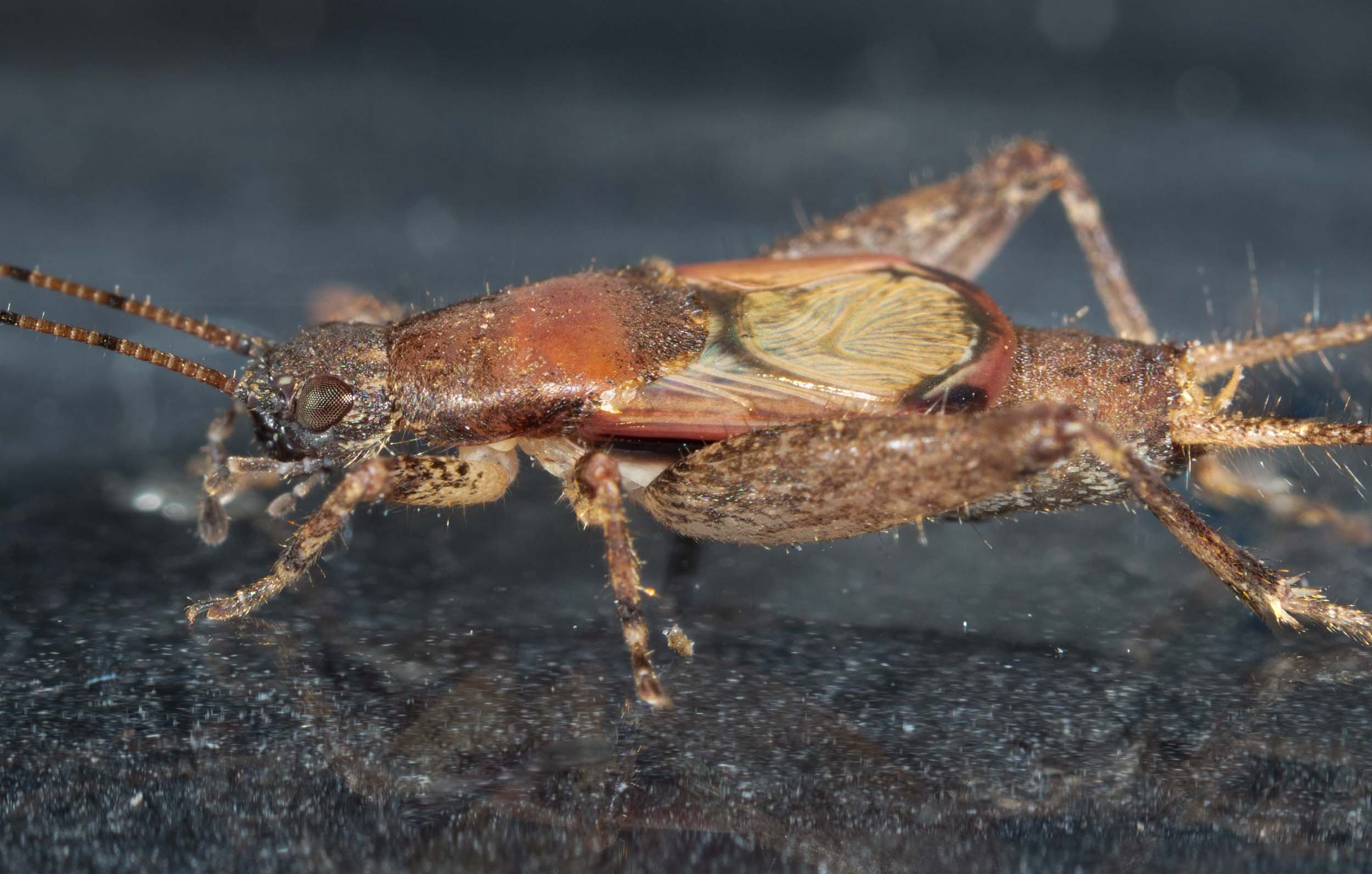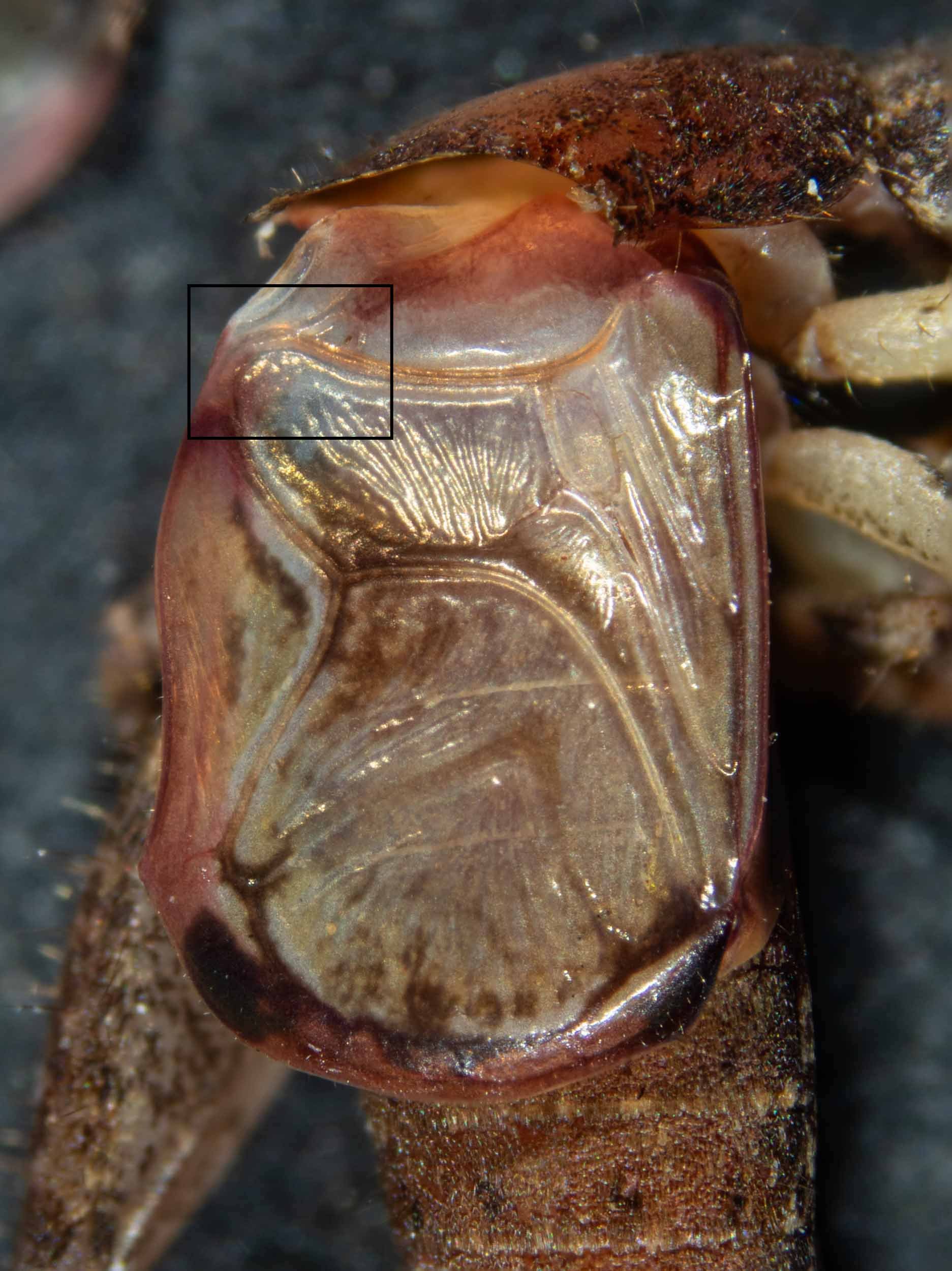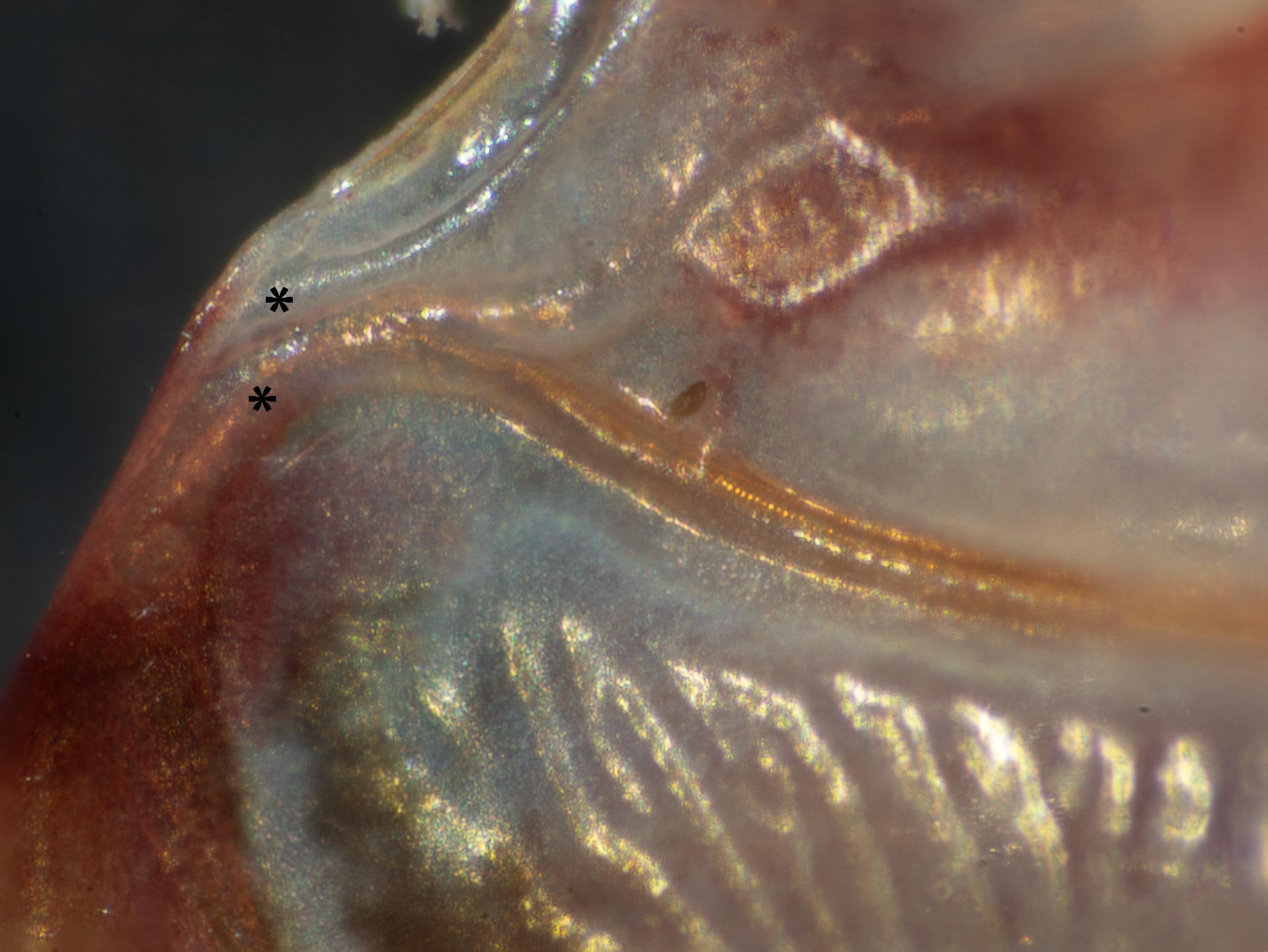Know me by my call

Finding a mate is a biological imperative for most sexually reproducing animals.
It’s generally the responsibility of the male to locate a female - cherchez la femme. This often involves a search by sight or scent.
But an alternative strategy, widely used across the animal kingdom, is to attract a mate with a call - a “love” song, if you will.
Almost all birds and frogs attract a partner in this way. It’s also a method used by a host of insects - think cicadas, grasshoppers, katydids and…crickets, the subject of this blog.
Who are you?
The story begins with the search for the identity of a cricket, which we found in the forest in mid-winter.
This individual, an adult male, looked similar to a nymph I had discovered several years ago and tentatively identified as a member of the genus Ornebius (iNaturalist observation here).
Having an adult in the hand meant I could record its morphology in detail to confirm its genus identity - and perhaps work out which species it belonged to. That’s what we do.
After examining the cricket closely, I was confident it was indeed an Ornebius - based on the diagnostic features given in Otte and Alexander’s monograph “Crickets of Australia” (ref. 1) and the CSIRO handbook by Rentz and Su “A Guide to the Crickets of Australia” (ref. 2).
The photos in the panel below illustrate those features:
body length >7.5mm (photo C)
last segment of abdomen not black between cerci (photo B)
posterior margin of forewings (yellow arrow, photo A) with continuous brown or black band or with 3 darkened areas.
front of mirror (red arrow, photo A) not hidden beneath pronotum
tibiae I and II slightly or strongly banded (photo A, C)
genital processes brown to pale brown or whitish (not black) (photo B)
But despite considerable effort, I was unable to match it to any of the Ornebius species described in my reference texts. My cricket differed in one or more morphological features from all of them. This was always going to be a challenging task as the Australian Faunal Directory lists 35 Ornebius species.
You Ning Su, co-author of the CSIRO text, has helped me identify various orthopterans in the past. So I sent him images of my cricket to see if he could help me out.
He replied - “this is one of the undescribed Ornebius species in South East NSW”. A bit unsatisfying, but at least I knew I couldn’t have done any better. I had the right genus but the species is a ‘known unknown’.
You Ning asked if I had recorded the male’s call. Why?
The call of the male is a signature character for a cricket’s species identity. Calls are species-specific to ensure that only appropriate females are attracted. It’s one of the evolutionary mechanisms that keeps a species distinct from other, closely related species.
So both a female cricket and the curious naturalist can know a male cricket by his call.
A recording of the call will be an essential component of any future description of this as yet undescribed Ornebius species. So getting a recording became my next challenge.
Recording the call
Otte and Alexander state that “with certain significant exceptions, Australian crickets tend to sing only at night”. So we placed the male in a container in the lounge room, positioned a sound recorder nearby and waited for him to call as we sat around relaxing in the evenings, watching Le Tour de France.
We heard the cricket calling on a couple of occasions - always after 9pm - but every time he stopped before I managed to get to the sound recorder to switch it on.
So I connected a long lead to the device to start recording from my comfortable seated position as soon as singing began.
With this set-up, I managed to get a recording of the call on 21st July. It was made at 9:30pm.
I used Audacity software to create an audiogram of the call (a plot of sound intensity vs. time). The structure of the call is illustrated in the diagrams below.
21st July; single call with 3 chirps
The call consists of 3 chirps, separated by a time interval of between 9 and 20 seconds.
Each chirp contains between 6 and 12 pulses, separated by around 1 second from one another.
A pulse consists of a packet of about 150 sine waves, which increase then decrease in amplitude over a time interval of 30 milliseconds.
The male repeated his performance the following evening.
Four calls were heard. Two of these consisted of single chirps, the other two of 3 chirps, separated by between 7.5 and 30 seconds.
This is an audiogram of the first call, heard at 9:26pm, which consisted of 3 chirps.
22nd July; single call with 3 chirps
The number of pulses per chirp in the calls on that second evening was more consistent than on the previous evening - averaging 6.9 +/– 1.2. As in that first performance, pulses are separated by a consistent interval of around 1 second.
You can listen to the recording of the first call on that night by clicking on the play button below. In case you’re wondering, that continuous clacking sound in the background is our wood heater warming up!
Follow the score in the audiogram above while you listen to the music.
It’s a minimalist composition, even by cricket standards. But it apparently works for the female Ornebius.
The Audacity software also provides an analysis of the sound frequency of the call, as seen in the plots below of the 4th chirp heard on 22nd July.
The carrier (dominant) frequency is 5 kHz with another component at 10 kHz (shown in the lower plot).
22nd July; 4th chirp consisting of 7 pulses. The lower panel shows the frequency distribution of each of those pulses. It is strongest at around 5000 Hz (5kHz) with a second, weaker component at 10,000 Hz (10kHz).
A comparison with calling data shown in Otte and Alexander (ref. 1) for 30 different Ornebius species shows that my cricket’s call is substantially different to all of those. In particular, the pulse repetition rate of 1/sec is lower than any of those species.
This is in line with You Ning Su’s claim based on morphology that this is an undescribed species.
While we now know how the call of our cricket differs from other species in the Ornebius genus, we can only guess as to which aspect of the call causes the female to respond.
Is it the frequency? - probably not by itself, as several different Ornebius species share the same call carrier frequency. Or perhaps the pulse repetition rate or number of pulses in a chirp? Or the pattern of chirping?
Likely, it’s a combination of all of these features which enables the female to “know” the calling male is right for her. Behavioural experiments could in theory provide an answer to this question.
How does the cricket produce its call?
My analysis of the call of the Ornebius male cricket piqued my curiosity about how it is generated.
While nothing is known specifically about Ornebius, there has been a lot of research into the mechanism of calling in a handful of cricket species - namely, Acheta domesticus, Gryllus campestris, Gryllus bimaculatus, Teleogryllus oceanicus and Teleogryllus commodus.
It’s reasonable to assume that knowledge gained from these “model” species can be extrapolated to Ornebius and other crickets.
At the outset, let me dispel a widespread misconception - crickets (and katydids) don’t call by rubbing their legs together.
Rather, they do it by rubbing their fore wings together. But exactly how does this movement of the wings generate sound?
“Wing” is actually a misnomer as cricket fore wings are not used in flight at all. They are highly modified, being reduced in length and stiffened and are accordingly given a special name - tegmina (singular tegmen).
Importantly, while the fore wings no longer function in flight, the muscles in the thorax that move the fore wings of its flying relatives up and down are still present in Ornebius. (Don’t you just love evolution?) More about those muscles later.
The network of veins, present in a regular wing, has been altered to give the tegmen special acoustic properties - in particular, to modify its resonance. As an analogy, the special shape of the sound box of a guitar gives this instrument a unique sound.
Each species of cricket has a unique pattern of veins in its tegmina, which is partly responsible for its species-specific call.
This photograph shows the left tegmen of my Ornebius cricket, in place on the cricket. This tegmen lies above and obscures the right tegmen.
The names of some of the veins and regions of the tegmen - chords, harp veins, mirror - reflect the fact that these body parts are, in a sense, musical instruments.
Rentz and Su (ref. 2) point out that in Asia “crickets have been revered from time immemorial for the melodic songs they produce”.
One of the veins, the stridulatory vein or file, performs a central role in sound production.
This vein is covered by the pronotum, so the tegmen must be removed to see it.
dorsal view of tegmina in intact male
This image shows the left tegmen after removal from the cricket (which was sacrificed for these observations).
The tegmen has been turned upside down, so the pattern of veins is the mirror image of that seen in the above photo.
On the inner side of the stridulatory vein, there is a series of parallel ridges running almost the entire length of the vein.
ventral view of left tegmina after removal
These ridges (or pegs as they are called in the trade) are evident in the high magnification image below. There are around 180 pegs. This number is an important diagnostic character for a cricket species.
view of inner side of stridulatory vein of left (upper) tegmen
This row of pegs work like the teeth on a comb or the strings of a guitar. Running a finger nail along a comb or strumming the strings of a guitar with a plectrum produces a sound.
But what part of the cricket wing has the function of a finger nail or plectrum in this analogy? – It’s part of the front corner of the opposing tegmen.
The right tegmen in the photo below has been exposed after I’ve removed the left tegmen. Note that the pattern of veins on the right tegmen is the exact mirror image of that on the left tegmen.
Two raised veins marked with asterisks, called the striker, are visible on the edge of this right tegmen. The striker works like the finger nail or guitar plectrum.
But how does the cricket operate these components during calling?
First, it lifts both tegmina upwards, away from the surface of its body so they are free to move sideways.
It moves them apart and then brings them together rapidly. It does this using the same thoracic muscles to those that flap the wings up and down in insects that have proper fore wings. It’s just co-opted these muscles for singing.
As the wings come together, the striker on the edge of one tegmen rubs along the pegs of the stridulatory vein/file on the other tegmen.
The drawing below from Ewing and Hoyle (ref. 3) shows the sideways movement of the wings during calling in the cricket Acheta domesticus.
from Ewing and Hoyle (1965) J. Exp. Biol. 43, 139-153.
One pass of the tegmina across each other causes them to vibrate for 30 milliseconds at a frequency of around 5 kHz. This is one pulse - the basic unit of the song.
The frequency of the song is not apparently solely determined by the number of pegs on the file. Similarly, the sound of a guitar is not determined by the number of its strings.
There are several Ornebius species that use the same 5 kHz song carrier frequency but which have very different numbers of pegs on the stridulatory vein file. The resonance character of the tegmen will largely dictate that carrier frequency and that will likely differ between species that share the same number of file pegs.
When repeated at a rate of about 1 per second, pulses become a chirp. There are typically 7 pulses per chirp.
In the 1 second interval between pulses, the tegmina return to the open position. The cricket uses antagonistic muscles to the ones that closed them.
This diagram from Bentley and Hoy (ref. 4) shows how alternate contractions of fore wing opener and closer muscles in the thorax slide the striker over the pegs of the file.
from Bentley and Hoy (1974) Scientific American 231 (2), 34-35.
The rate of these muscular contractions is in turn dictated by the pattern of firing of the nerve cells (neurons) that innervate them.
How are neurons in the cricket’s central nervous system wired up to generate these patterns of activity? How do the cricket’s genes regulate the construction of these neural networks? (It’s clear from many studies that cricket calling is an innate rather than a learned behaviour).
These are big unanswered questions in neuroscience (which, incidentally, were the focus of my research career, albeit with cockroaches, grasshoppers and fruit flies rather than crickets as subjects).
Coda
I mentioned earlier that the left and right tegmina in Ornebius have the exact same pattern of veins, including a stridulatory vein. Removing the right tegmina from the animal and turning it over reveals that its stridulatory vein has the same pattern and number of pegs as on the left tegmina - as seen in the image below.
stridulatory vein on lower (ventral) side of right (lower) tegmen
This means that if the cricket happens to place the right tegmina on top of the left, rather than the other way around, it can still call normally. Crickets are ambidextrous!
References:
Otte, D. and R.D. Alexander (1983) “The Australian Crickets (Orthoptera, Gryllidae).” Academy of Natural Sciences of Philadelphia. Monograph 22.
Rentz, D. and Su, Y.N. (2019) “A Guide to Crickets of Australia.” CSIRO Publishing.
Ewing, A. and Hoyle, G. (1965) “Neuronal mechanisms underlying control of sound production in a cricket: Acheta domesticus.” J. Exp. Biol. 43, 139-153.
Bentley, D. and Hoy, R. (1974) “The neurobiology of cricket song.” Scientific American 231 (2), 34-45.














